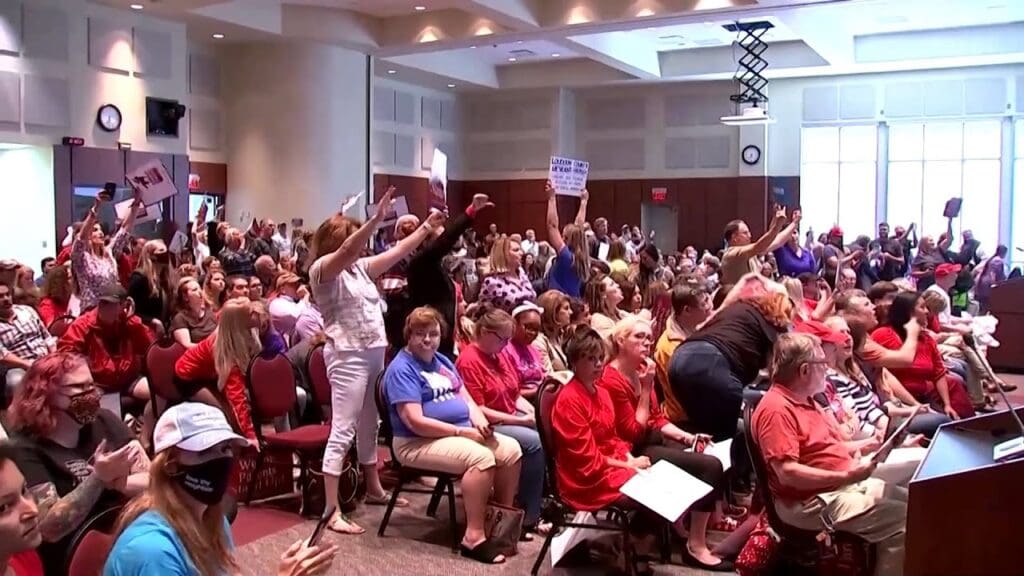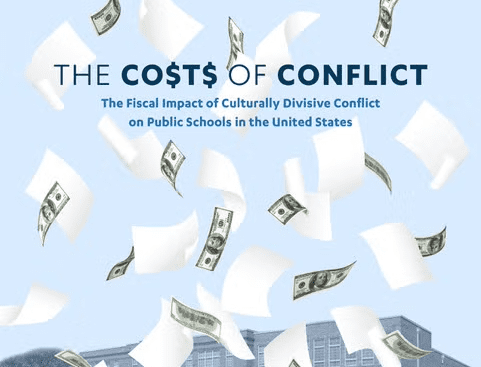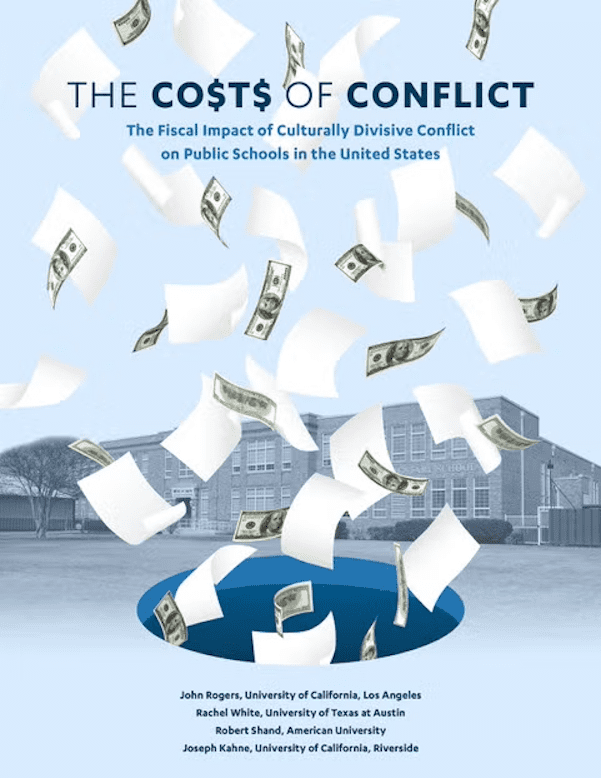Districts nationwide spent an estimated $3.2 billion in 2023–24 responding to culture-related school conflicts.
Posted: October 25, 2025
The True Cost of Culture Wars in Our Schools
In an era when every dollar counts for our nation’s students, a staggering $3.2 billion is being diverted from education to manage manufactured cultural conflicts in our public schools. This isn’t just about money – it’s about the systematic disruption of learning spaces that should be safe havens for all students, especially our most marginalized youth.
A groundbreaking study from UCLA’s Institute for Democracy, Education and Access has finally put numbers to what educators have been saying all along: the weaponization of cultural issues in our schools comes at an enormous cost, both financial and human.
The Numbers Don’t Lie
Let’s be clear about what we’re facing:
- Nearly two-thirds of school districts (66%) are experiencing moderate to high levels of conflict over cultural issues
- $3.2 billion spent in 2023-24 alone on managing these conflicts
- 46 states affected
- 467 superintendents surveyed, painting a picture of widespread disruption
This isn’t just about controversial books or curriculum choices. We’re talking about organized campaigns targeting discussions of race, racism, and LGBTQ+ identities – the very conversations that help create inclusive, equitable learning environments for all students.
Beyond the Balance Sheet
The real costs run deeper than dollars and cents. The damage inflicted by these conflicts cuts far deeper than their financial toll. In classrooms across the nation, experienced educators are leaving the profession in alarming numbers, creating a brain drain that will impact students for years to come. Attendance has become a growing concern, with both students and teachers missing more school days than ever before. The very environment where learning should flourish has been compromised, with tension and anxiety replacing curiosity and engagement. Schools report a disturbing rise in harassment incidents, while acts of vandalism have become increasingly common. Perhaps most troubling is the surge in violent threats and rhetoric targeting educators and administrators, all while coordinated misinformation campaigns continue to spread discord throughout school communities.
As lead researcher John Rogers puts it, these conflicts are “generating fear, stress and anxiety” throughout our school systems. But let’s call this what it really is: an orchestrated attempt to undermine public education and silence discussions about equity and inclusion.
What’s Really at Stake
When schools must divert resources to additional security measures, legal defense, crisis communications, responding to the media and overwhelming public records requests…

…they’re not investing in: smaller class sizes, special education support, mental health resources, arts and enrichment programs, teacher pay and professional development.
Moving Forward
This research, conducted by researchers from UCLA, UT Austin, American University, and UC Riverside, confirms what educators on the ground have long known: these manufactured conflicts are eroding the foundation of public education and the trust between schools and communities.
The question now isn’t whether these attacks on inclusive education are costly – we have the numbers. The question is: how do we protect our schools, support our educators, and ensure every student has access to an education that reflects their identity and prepares them for a diverse democracy?
Our children deserve schools focused on learning, not culture wars. Our educators deserve support, not harassment. And our $3.2 billion? It deserves to be spent on education, not defending against ideological attacks on our public schools.
The time for silence has passed. As advocates for educational equity, we must stand united against these coordinated efforts to undermine public education. Our students’ futures depend on it.
Want to learn more? Read the full report: “The Costs of Conflict: The Fiscal Impact of Culturally Divisive Conflicts on Public Schools in the United States.”


